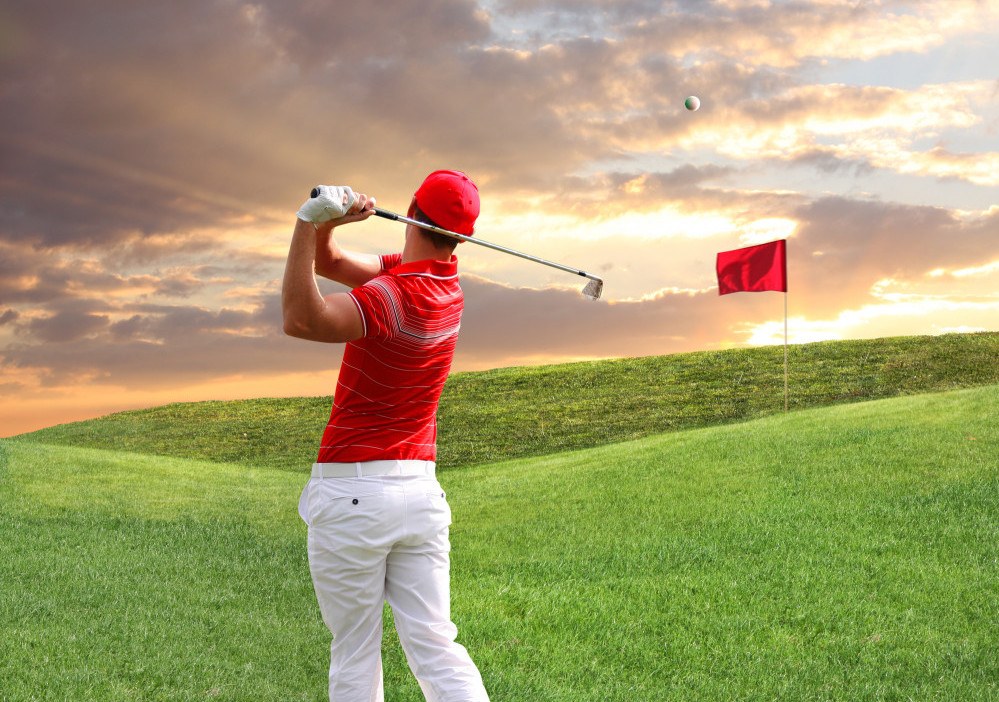My golf swing has never really had a huge movement off the ball and back, but I have noticed over the last year or two that I don’t always stay as far on top of the ball s I would like, especially towards the end of a round when I am a bit tired. I have been looking at different methods of how to stop sway in the golf swing in general and see if I can find any nuggets that will improve ball contact.
Consistency is Key in the Swing
There are probably a thousand ways to teach the golf swing and just as many more that get the job done. It is, as they say, a game of how many rather that how. We have all played with people who have less that orthodox swings who find a way to get it done. In fa, this is one of the things I love about golf. It is a game for Jim Furyk as well as Ben Hogan.
This doesn’t mean that is always a good idea to try to do things differently though. The golf swing basics are there for a reason: they give you the best possible chance of making regular, solid contact with the ball and a repeatable shot shape. This is always the bottom line although of course the path to getting there can be a very individual thing.
when we look a little bit deeper, what we really want to do is be delivering the club in the same way every time. This means that our club path is the same and, more particularly, the low spot of the swing is the same. We are looking for the holy grail of ball first contact and the divot just after as the ball fizzes away off the clubface when we compress it.
Power vs Accuracy
One of the problems that we can find is that the best way to do this might not be the most powerful. For example, hitting a half-swing seven iron without much turn, just back and through, is a good way of hitting very consistent seven irons. It is also probably the best way to be the shortest player in your group by a good distance!
On the other hand, do the John Daly length swing and trying to knock it out of the park can produce some massive hits. It will probably produce a hell of a lot more mishits though and not many balls going the same distance or direction as each other.
We are always in a sort of compromise between power and control. This is where the idea of moving off the ball (or sway) and then coming back again comes into play.
The logic goes that we can generate power by moving our body off or behind the ball during our backswing and then adding this movement to the speed of the arms/torso rotation as we initiate the downswing thus creating more power without sacrificing solid contact.
The reality doesn’t quite work like this however. Firstly, this doesn’t add much or any additional clubhead speed. Secondly, and most importantly, it makes timing much more difficult. We are trying to coordinate the downswing with a slide back towards and through the ball.
Unfortunately, this is where many of us spend out time as golfers and the consequence is less that stellar ball-striking. So what are the solutions?
A Centered Swing
The approach that currently makes most sense to me is simply to follow a swing model that involves staying centered over the ball. I am not one for huge amounts of tinkering with my swing, but I do adjust bits and pieces. The obvious model to follow here would be stack and tilt. Their idea is that there is no movement at all off the ball.
Without going into the finer points of this, if you are never moving back, sway is no longer a problem. Weight stays permanently forward and the movement is down and/or possibly a hip slide forward through the ball. Their is no complicated timing to get everything to meet up at the point of impact.
I don’t know if stack and tilt is the answer to every golfer’s prayers. I do think, as an idea, it has some merit in terms of reducing movement away and also having fewer moving pieces in the puzzle.
Drills to Stop Sway
Perhaps rebuilding the swing isn’t in your immediate plans. Their are some things you can try which should stop excessive sway and improve strike. The first thing is to work on a feeling. You can do this without hitting balls. One common way is to address the ball with either your arms or a club in front of your chest. Simply make a rotating movement with your shoulders while trying to keep the hips from moving backwards.
The rear hip will inevitably open up but it should side away from the ball backwards. This is all about ingraining the feel of a rotation rather that a sway. The sway might be a problem on the downswing when we try to get back square to the ball, but the cause is almost always this first movement. Getting used to staying over the ball like this teaches us a better motor pattern that will reduce the cause and therefore the consequence of sway.
The Head Drill
I have heard this called the head drill or the wall drill but it is essentially the same thing. It will work if you still struggle after the turn drill above. To do this, you need to set up as if you are going to hit a ball but facing a wall. You need to be close enough so that you can ‘nod’ your head forward and touch the wall. You then simply start to turn as if starting the backswing. If you feel your head dragging across the wall, you are moving off the ball and need to work on the head not moving. Actually, not moving is not completely necessary. Don’t worry if you feel a slight movement but you definitely should not be dragging your forward a few inches or more across the wall.
The One-Legged Swing
The final drill that can help is actually quite difficult to do. My balance is terrible and Is struggle with this. I do think it helps with a feeling even for me though and if your balance is (hopefully) better that mine, it could be good.
As you address the ball, you simply raise your rear foot off the ground. This makes it physically impossible to sway away from the ball. You simply have to stay centered or you will fall over!
Their are a couple of caveats here. Firstly, don’t try to hit the ball too hard (you are standing on one leg after all!) Secondly, on leg means that it is also impossible to really transfer though the ball. Low point will be on the ball but not a couple of inches after and ball flight won’t be quite the same either. Once again, this does help with working on a feel and a movement pattern which is enough to take excess sway out of the game for most of us.





